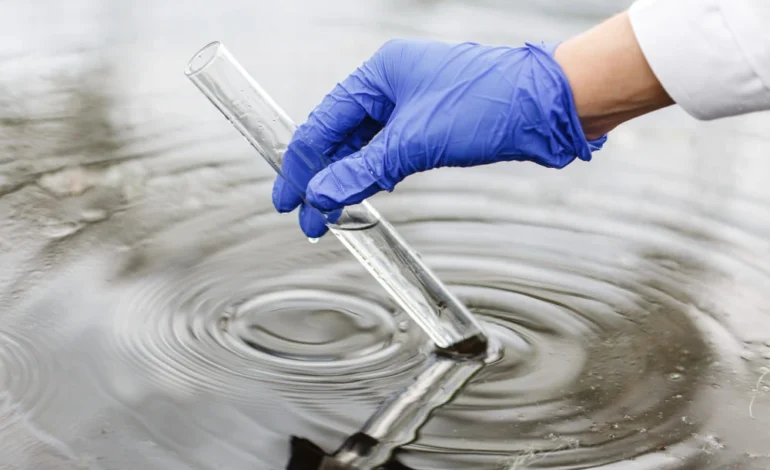Water Tank Treatment: A Complete Guide

Among the most important resources in our daily lives is water. From drinking and cooking to cleaning and bathing, the quality of water directly impacts health and hygiene. However, what many households and businesses overlook is the importance of maintaining and treating water tanks. Water quality can be lowered over time by the buildup of bacteria, algae, silt, grit, and other dangerous pollutants in water tanks. This is where water tank treatment becomes essential.
In this blog, let’s explore what water tank treatment is, why it matters, and how to ensure your water is clean, safe, and free from harmful pollutants.
What is Water Tank Treatment?
Table of Contents
Water tank treatment is the process of cleaning, disinfecting, and maintaining water storage tanks to ensure the water inside is safe for consumption and everyday use. It involves removing sludge, sediment, and microbial growth, followed by applying safe disinfectants to kill bacteria, viruses, and other pathogens.
This treatment is not just for households but also for commercial buildings, industries, hospitals, schools, and any establishment that relies on stored water.
Why is Water Tank Treatment Important?
- Health and Safety – Contaminated water can lead to serious illnesses like diarrhoea, cholera, typhoid, and skin infections. Regular treatment eliminates harmful bacteria and viruses.
- Improved Water Quality – Clean tanks prevent foul smells, discolouration, and an unpleasant taste in water.
- Prevents Algae and Fungal Growth – Stagnant water in untreated tanks often becomes a breeding ground for algae, fungus, and even mosquitoes.
- Extends Tank Life – Regular cleaning and treatment prevent rust, corrosion, and structural damage in tanks.
- Peace of Mind – Knowing that your water is safe brings confidence, especially in households with children and elderly family members.
Steps Involved in Water Tank Treatment
1. Inspection
The first step is to inspect the water tank for dirt, cracks, leakage, and the extent of contamination.
2. Draining the Tank
All stored water is emptied from the tank before cleaning begins.
3. Sludge Removal
Sludge and sediment at the bottom are removed using vacuuming or scrubbing techniques.
4. Scrubbing and Pressure Cleaning
The tank walls and floor are thoroughly scrubbed to remove dirt, algae, and microbial deposits, followed by pressure cleaning.
5. Disinfection
Safe disinfectants like chlorine are applied to kill germs and bacteria. Some service providers use advanced UV treatment to ensure maximum purification.
6. Rinsing and Drying
The tank is rinsed thoroughly with clean water to remove any chemical traces and left to dry.
7. Refilling
Once the treatment is complete, the tank is refilled with clean water, ready for use.
Types of Water Tank Treatment
- Chlorination Treatment – Uses chlorine to disinfect water and eliminate harmful bacteria.
- UV Treatment – Uses ultraviolet rays to neutralise pathogens without adding chemicals.
- Mechanical Cleaning – Physical scrubbing and pressure washing to remove dirt and biofilm.
- Anti-Bacterial Coating – Some treatments involve applying protective coatings to prevent future contamination.
How Often Should Water Tanks Be Treated?
Water tanks should be cleaned and treated every six months for residential use and every three months for commercial and industrial use, according to experts. However, the frequency may vary depending on water quality and usage levels.
DIY vs. Professional Water Tank Treatment
- DIY Cleaning – Suitable for small tanks at home, but may not effectively remove all contaminants.
- Professional Treatment – Recommended for large or frequently used tanks. Professional service providers use advanced equipment, certified disinfectants, and trained staff to ensure safe and effective cleaning.
Tips for Maintaining Water Tanks After Treatment
- To keep dust and insects out, keep the tank covered.
- Avoid storing water for excessively long periods.
- Regularly inspect for cracks or leakage.
- Install a filtration system at the inlet for a cleaner water supply.
- Schedule routine professional tank treatments.
Final Thoughts
Water tank treatment is not just a cleaning process but a health investment. Regular treatment ensures your water is safe, your family is protected, and your tank remains durable for years. Whether you manage a household, business, or institution, clean water is non-negotiable. For the best results, consider hiring a professional water tank cleaning service to guarantee safety and long-term benefits.









